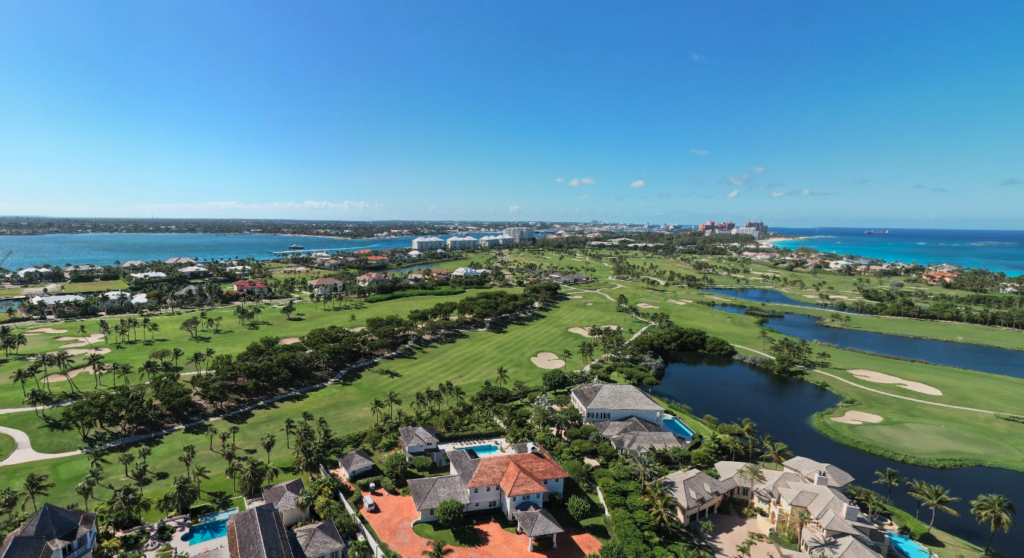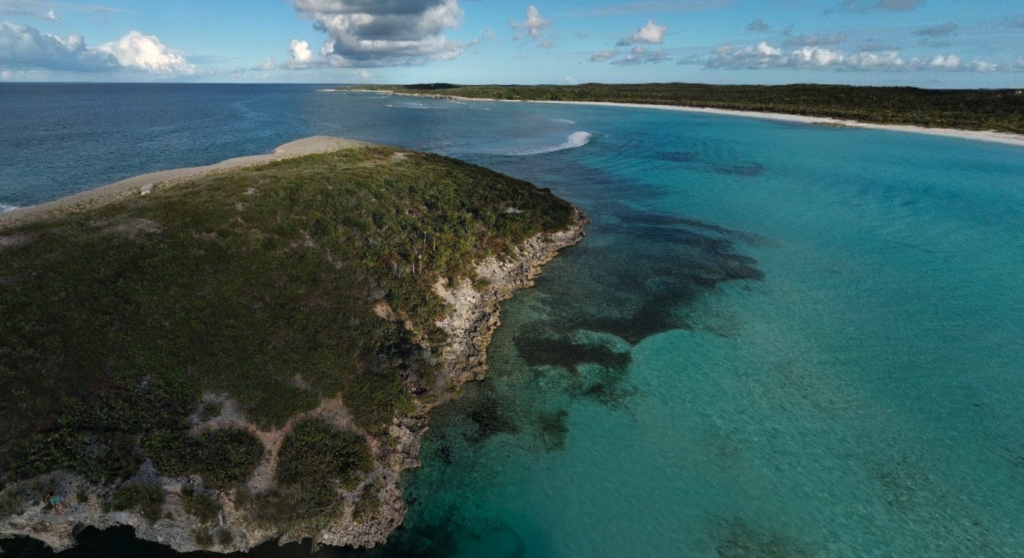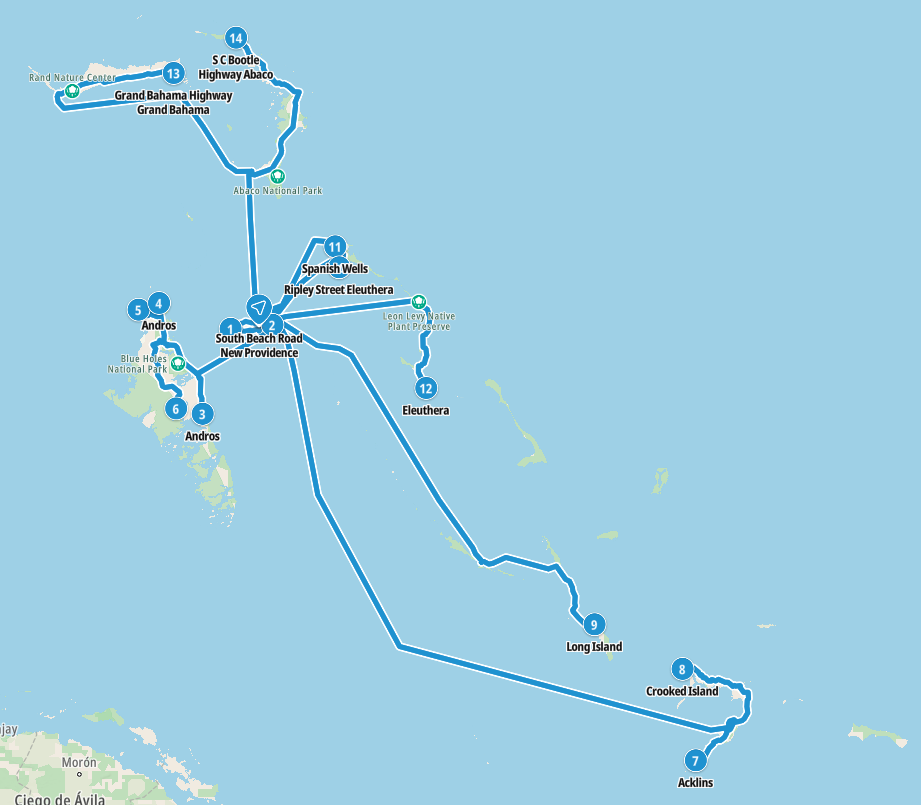The Bahamas / Commonwealth of The Bahamas – Let’s explore here

What’s it like in the Bahamas?
The Bahamas consists of over 700 islands spread out over 500 miles (800km) in the Caribbean Sea in North America. The sum total of land amounts to a relatively small country, about the size of Northern Ireland.
There are no mountains on the Bahamas, being mainly flat islands. The highest point is Mount Alvernia, at 207 ft (63 m) above sea level. The largest island is Andros, which is larger than all of the other islands combined, being 104 miles (167 km)long and 40 miles (64 km) wide.
The population of the Bahamas is around 413,000 (2023), about three in five of whom live in its capital, Nassau, which is located on the island of New Providence. It relies heavily on tourism like many other Caribbean islands, although it is a tax haven, and one of the wealthiest countries in the Americas.

A bit about the history of the Bahamas
Early History and Indigenous Peoples
The Bahamas were originally inhabited by the Lucayan Taíno people, a subgroup of the Arawak indigenous group. They had settled on the islands around 500 AD, developing a society based on fishing, farming and trade. The Lucayans were the first to encounter Europeans.
European Discovery and Colonisation
Christopher Columbus arrived in the Bahamas on his first voyage to the Americas in 1492, landing on an island he named San Salvador (known today as Guanahani). Following Columbus’s arrival, the Lucayan population rapidly declined due to diseases brought by Europeans and forced labour. In the 17th century, the Bahamas became a target for European colonial powers, with the British eventually establishing control over the islands.
British Colonisation
The British established a formal colony in the Bahamas in 1717, following the temporary Spanish and French control of the islands. The British used the islands as a strategic naval base and established sugar plantations, relying on enslaved Africans for labour. The Bahamas’ economy grew during this period, although it was largely based on piracy, as the islands became a haven for privateers and outlaws in the 18th century.
Abolition of Slavery and Economic Change
Slavery was officially abolished in the Bahamas in 1834, which marked a significant shift in the islands’ economy. While agriculture, particularly the cultivation of cotton and sugar, remained important, the Bahamas’ economy began transitioning toward a greater focus on trade and commerce. Over time, the tourism industry began to develop, though it remained relatively small.
Path to Self Governance
The Bahamas began to move towards self governance in the 20th century. The island gained the right to elect a legislative assembly in 1964, with gradual steps toward full independence. In 1973, the Bahamas officially became an independent Commonwealth realm, with its own prime minister and government, while still recognising the British monarch as the head of state.
Modern Era
Since gaining independence, the Bahamas has developed a thriving tourism industry, becoming one of the most popular tourist destinations in the Caribbean. The country has also prospered due to its offshore financial services sector. Despite its economic success, the Bahamas faces challenges related to inequality, unemployment and the environmental impact of hurricanes. The country remains politically stable and a member of the Commonwealth of Nations, continuing to focus on tourism, finance, and regional cooperation.


Bahamas road trip
The Bahamas is our 26th planned stop on our road trip through the islands of the Caribbean. Having explored the Turks and Caicos Islands, our next stop is the Cayman Islands.
Travelling overland between the islands is quite prohibitive due to the lack of transportation options. Travelling between different island countries via ferry is possible, however, ferries only operate between some islands. Chartering private boats between islands is also possible, although travelling with a car in this way is prohibitive. Flying is another option, although again, flights only operate between some islands.
Map of our road trip through the Bahamas

This is a map of our planned route around the Bahamas, starting and ending at the capital city, Nassau.
Weather in the Bahamas
When is the best time to visit the Bahamas?
The best time to visit the Bahamas is from December to April. During these months, the islands have 8-9 hours of sunshine per day and rainfall of 1.2 – 3.7 inches (30 – 95mm) per month. The temperature ranges from 17 – 30°C (62 – 86°F).
When is the worst time to visit the Bahamas?
The worst time to visit the Bahamas is from June to November. During these months, the islands still have 8-9 hours of sunshine per day. However, humidity rises and it rains an average of 1.8 – 8.7 inches (45 – 220mm) per month. The temperature ranges from 20 – 33°C (68 – 91°F).
Hurricane Season in the Caribbean
Hurricane season in the Caribbean runs from June 1 to November 30. Storms tend to be more frequent and more severe in the latter half of the season.
Hurricanes are least likely during December, January and February.
Travel in and around the Bahamas
Ferries to other islands within the Bahamas
There are many ferries between the different islands of the Bahamas.
Bahamas Ferries travel between the US Virgin Islands, from:
- Nassau to: The Abacos, Andros, Cat Island, The Exumas, Eleuthera & Harbour Island, Freeport
- Freeport to: The Abacos
Ferries to other Caribbean island countries from the Bahamas
There are no ferries to other Caribbean islands from the Bahamas.
Ferries to the USA from the Bahamas
Balearia Ferries travels between Florida and the Bahamas.
What’s it like to drive in the Bahamas?
They drive on the left hand side of the road in the Bahamas. The majority of the roads in the Bahamas are in fairly good condition, although some more minor roads are little more than dirt tracks.
We’ve also created a dedicated page to driving abroad, which you might find helpful 🙂
What currency do they use in the Bahamas?
In the Bahamas they use the Bahamian dollar. The US dollar is also widely accepted. Cash is widely used. The use of credit / debit cards is widely accepted in major cities, although not in rural areas. Travellers cheques are not accepted in the main. There are ATMs in cities, although not all accept foreign issued cards.
You should make yourself aware of the amount that your bank charges you for using credit and debit cards abroad. Often credit cards are cheaper for purchasing items directly, and for withdrawing cash from ATMs.
What language do they speak in the Bahamas?
They speak English and Creole in the Bahamas. English is spoken in tourist areas.
What time zone is the Bahamas in?
Remember, when you’re planning your next trip to take a look at what time zone it’s in.
Do I need a visa to visit the Bahamas?
We’ve created a dedicated, more comprehensive page on visas, which you should find helpful. Check it out!
Is wild camping legal in the Bahamas?
No, wild camping is not widely accepted in the Bahamas.
What plug / socket type do they use in the Bahamas?
In the Bahamas they use plug / socket types A and B.


Bahamian health issues
Is it safe to drink water in the Bahamas?
Yes, it is safe to drink tap water in much of the Bahamas. Bottled water is also readily available across the country.
What vaccinations are required for the Bahamas?
This NHS website is kept up to date with all relevant information on vaccinations in the Bahamas.
Phones in the Bahamas
What is the country calling code for the Bahamas?
The country calling code for the Bahamas is +1 242
What are the emergency phone numbers in the Bahamas?
- The emergency number for police in the Bahamas is: 911 / 999
- In the Bahamas, the emergency number for ambulance is: 911 / 999
- The emergency number for fire in the Bahamas is: 911 / 999
If you’ve got some useful info that you’d like to share, let us know!
And don’t forget to check out all the other pictures!
